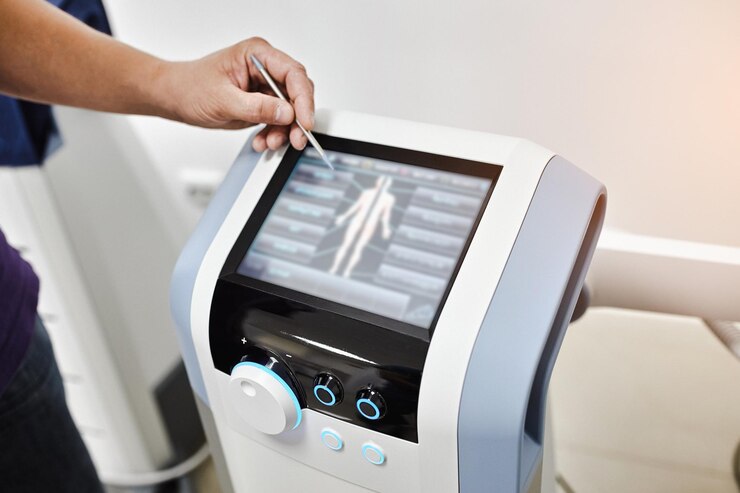Why Do Cancer Patients Use PEMF Therapy?
Understanding the Role of Pulsed Electromagnetic Field Therapy in Oncology
What Is PEMF Therapy?
PEMF therapy uses low-frequency electromagnetic waves to stimulate cellular repair and enhance biological function. It mimics the Earth’s natural magnetic field to help restore the body’s electrical balance, especially in stressed or damaged cells.
Unlike ionizing radiation used in cancer therapy, PEMF does not damage DNA or tissue. Instead, it works at the mitochondrial level to improve cell metabolism, reduce inflammation, and promote healing.

Cancer treatment often requires a multifaceted approach—not only to target tumors but also to manage side effects, support immunity, and improve quality of life. PEMF therapy (Pulsed Electromagnetic Field Therapy) has emerged as a supportive, non-invasive tool in integrative oncology, valued for its potential in pain relief, tissue regeneration, and cellular restoration.
Is PEMF Safe for Cancer Patients?
Yes, PEMF is non-invasive, painless, and has no known toxic side effects when used properly. However, it should be applied with guidance from a trained practitioner, particularly in oncology.
Most protocols avoid applying PEMF directly over tumors unless scientifically justified, focusing instead on symptom relief and tissue support.
How Does PEMF Support Cancer Patients?
1. Enhancing Cellular Energy (ATP Production)
–PEMF stimulates mitochondria to increase ATP (adenosine triphosphate) production. This is crucial for cancer patients whose cellular energy may be depleted from chemotherapy or chronic inflammation.
–More ATP = Better healing, stronger immunity, and reduced fatigue.
2. Reducing Inflammation
–PEMF has been shown to modulate inflammatory cytokines (like IL-1β and TNF-α), which are often elevated in cancer. Chronic inflammation fuels cancer progression and causes discomfort.
–Less inflammation = Better immune response and improved comfort.
3. Pain Management
–Cancer-related pain—whether from tumors, nerve damage, or treatment—is a major concern. PEMF has analgesic properties, shown in clinical studies to reduce neuropathic pain, bone pain, and post-surgical discomfort.
–Natural pain relief without opioids.
4. Bone Healing & Regeneration
–PEMF is FDA-approved for bone healing. In cancer, it may support patients with bone metastases, fractures, or post-surgical recovery.
—Stimulates osteoblasts (bone-forming cells) and helps manage osteoporosis.
5. Improving Circulation and Oxygenation
–PEMF therapy enhances microcirculation, promoting better tissue oxygenation—a critical need in cancer recovery.
––Better circulation = Improved nutrient and oxygen delivery to tissues.
What Does the Research Say?
- A 2013 review (Pilla, A.A., Bioelectromagnetics) highlighted PEMF’s anti-inflammatory effects and potential applications in oncology.
- Clinical trials on PEMF for pain management in cancer (e.g., bone metastases) have shown significant improvements in patient-reported pain and quality of life.
- Basic science studies reveal PEMF can influence cell membrane potentials, ion exchange, and DNA transcription in a way that favors tissue regeneration.

Conclusion: PEMF as a Supportive Ally in Cancer Care
While PEMF is not a cure for cancer, it can be a powerful adjunctive therapy to enhance healing, relieve pain, and reduce treatment side effects. It aligns well with the goals of integrative oncology: supporting the whole person, not just the tumor.
Medical Disclaimer:
The information provided in this article is for educational and reference purposes only and does not constitute medical advice or be used as a substitute for professional medical diagnosis, treatment, or advice. ALWAYS CONSULT ANY QUESTIONS YOU MAY HAVE ABOUT YOUR MEDICAL CONDITION OR MEDICAL PROBLEM THAT YOU HAVE ALWAYS CONSULT YOUR PHYSICIAN OR OTHER QUALIFIED HEALTH PROFESSIONAL. The content of this article is not intended to recommend any specific test, treatment, or medication and should not be construed as such. If you develop symptoms or require medical assistance, please contact a healthcare professional promptly.
